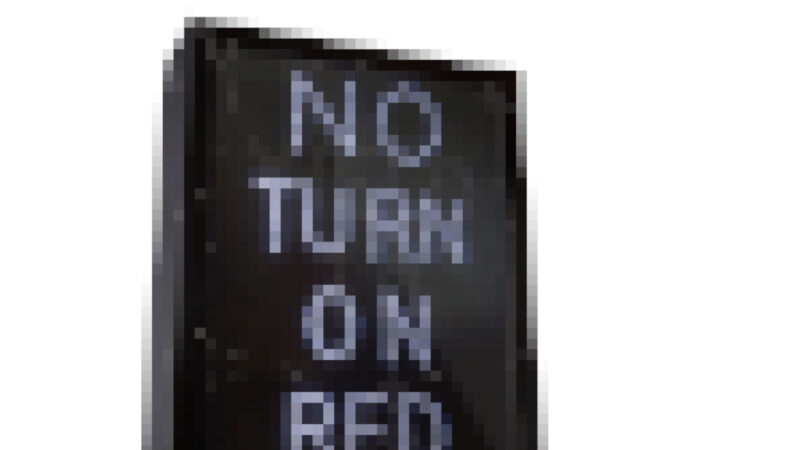October 1, 2020
Political literacy has always required an element of media literacy. That is, the larger a society is, the more it requires media to disseminate information and stage the terms of political discourse. The “public sphere” is then constituted by a citizenry who share terms and information, therefore reaching common judgments about matters of mutual interest. In a blunt paraphrase, this is Jürgen Habermas’ concept of the “public sphere.” The Habermasian public sphere has its detractors and emendations, but it’s a useful starting point.
Whether you were chatting in a Roman forum or reading a newspaper, there was always a requirement that the informed citizen also be conversant in the implicit parlance of the given mediums of the time.
Take the newspaper, for example: the reader knows instinctually what denotes a paid advertisement versus a political advertisement versus a story written by a journalist; the typographical difference between a headline and a byline; the temporally unfolding nature of print circulation (i.e. a ten-year old newspaper cannot be read in the same context as today’s newspaper). Many of these rules are unspoken. They require media literacy which is gained like any other language: knowledge of the media form accumulates over time and gathers below the surface of explicit apprehension.
Each media possesses a language of its own.
Literacy makes a knowledgable user. Media and language share this underlying reality: words are a communication media. If you are illiterate in the media form that is a codex-bound novel, for example, you are confused immediately upon opening. The first page is blank. You were expecting words. You wonder if you have a misprint. To make matters worse, the next page has some matrix of numbers, letters, categories and something about the Library of Congress. Finally, you get to the table of contents and all the ideas are outlined with strange numbers next to them, but how do you get to what you wanted to read? Frustrated, you conclude either the novel is horrible, or you’re not fluent in this language.
Media literacy is this essay’s subject. In light of the coming election season, its end is political literacy.
This lesson comes from Blue’s Clues. Just watch the first few seconds, you get the idea.
Who is Steve talking to?
As far as I can tell there are multiple audiences.
First, there is the audience the writers created virtually. The writer’s needed to write the lines of an audience so that Steve could respond to them. Even though we never hear them, what they say is assumed by Steve’s answers. Let’s call this the “writer’s audience.” It is created purely from the writer’s imagination to help them fill out a plot where the other character—the real time child viewer—is inaccessible. Most times, this audience isn’t vocalized in the production. The kid’s on the other side of the TV are supposed to give it voice. As far as the story is concerned, it is heard only by the character Steve. He responds to them based on what the writers put in the audience’s mouth.
Second, you have an actual recorded audience that says exactly what the writer’s wrote. Let’s call this the “studio audience.” It’s important to distinguish this from the first. Usually, the studio audience only yells at Steve that there is a “clue.” Ironically, the running gag in the early shows is that Steve almost always mishears whatever the studio audience is saying. The clues are the most important part. Damnit, Steve is so adorably clueless.
Third, you have the actual audience, the real TV viewer. This is the viewer on the other side of the screen—you and I, my childhood self, and all the other children who watched the show and still do on YouTube.
I remember mostly watching Blue’s Clues once I was too old to do so. This is how I learned my political literacy from Blue’s Clues.
I listened to Steve ask the viewer questions, noticed the empty space in between Steve’s lines, and winced at the occasional vocalization of the “studio viewer” because of its forced diegetic surreality. The show just passed over me. I watched from the outside, a fly on the wall. I knew I wasn’t the intended audience. That is, I never shared the thoughts of the “writer’s audience.” Additionally, I was never juvenile enough to actually speak back to my television. Either the questions were too facile, or I knew Steve couldn’t hear me so I refused to indulge the strange, alienating theater.
Here’s how Blue’s Clues taught me to engage the 2020 election cycle:
Who is the president talking to? Who is party candidate talking to? What about the debate moderator? Who is a “studio audience” talking back to?
A child engaging with Steve is not expressing self-determination. Sure, they can say whatever they want, hypothetically. If Steve asks “where’s Blue?” and instead of saying “under the table” the child says “to hell with Blue Steve, let’s go back and huff mace with Mr. Salt,” Steve still says—no matter how hard you try—“oh look, you’re right, Blue is under the table!”
Eventually, the child begins to believe Steve is listening when he or she says whatever words form a logical bridge to Steve’s next line. The studio audience suggests this for the child. It greases the wheels of the preferred mode of engagement. This is not, though, because Steve is listening. The child is saying the only line to which Steve responds. The script is written in reverse. The questions no longer write the answers, the answers write the questions.
The studio audience was always a redirect. Although the “studio audience” for debates are not pre-recorded as in Blue’s Clues, their lines are no less pre-written and pre-screened. The debate stage studio audience existed as a symbol of the public’s self-determination of the terms of the political discourse. Just as the children who are are recorded in Blue’s Clues function as a symbol of the viewer’s input when in reality, the script is already written.
The studio audience encapsulates our contemporary capacity for political self-determination. This political tool was used, playing on our basic herd instincts, to teach us the terms of engagement in modern mass society: signify our approval or distaste of our leaders by cheering or moaning as a crowd of a pure affect as the script played out before us. Now, unfortunately, the herd instincts which used to mollify us have risen to fever pitch, a stampede. The political coordination of vacuous canned laughter or jeers was paraded as a form of political engagement distant enough for leaders to feel comfortable but close enough to home to make us feel that the politics were personal to us. On one hand, it sat us in the studio, but on the other, it was only in the audience. The only muscle of political engagement we have ever exercised has mutated into a new political scene: the public has no political logic available for its engagement save mob-like coordination around pure, nebulous storms of affect.
The genre of our contemporary political theater is not melodrama, nor sit-com, nor reality TV. It is Blue’s Clues: the facile parroting of a recycled political script which continues ad absurdum re-inscribing the logic of the current episode into the creation of the next. While it may have served some political scenes well, social media does not create a link between the constituency and the leader any more than mail-time created a link between me and Steve. It does, however, gives the audience the distinct impression that someone is listening which is all that is necessary in this particular genre of political Blue’s Clues theater. It functions primarily as a misdirection, an empty symbol of the publics’ designation of the terms of their politics. We may be included in the conversation, but like Blue’s Clues it hardly matters if you want Steve to do something that’s not in the script.
So the public shouts at the television for the leaders to do something else, anything else. But now having no recourse, befuddled by this alien media spectacle where the person on the screen looks at me, talks through the screen as if to me, but does not hear me, the audience takes solace in learning the skill of setting up their leader’s next line, or laughing when the signs lights up.
Of course now the debate is entirely virtual, without studio audience. Political debate has shed its modern media age facade. The candidate speaks to no bodily audience or physical constituency, but to an audience that is entirely virtual, to a “writer’s audience.”
We accept the virtual debate because we now believe it is an appropriate site for political discourse. The transition was painless. Notably, the most celebrated defenders of democracy would be completely awestruck that we accept as “democratic” two disembodied political patricians being fed questions by an aristocratic third-party supposedly acting our behalf. But for as long as I can remember, debate has always taken place in front of a virtual audience. That is, the audience in mass media society is always present to the candidate as an imaginary fabrication—either as a result of polls, data, or narratives which are written into the personality of monolithic, political mob-like characters.
This occurs out of necessity, not unlike the need for a “writer’s audience” to build Steve’s character and write his lines. Except in this bad dream, I’m still watching all the children in the audience shout “a clue! A clue!” back at Steve who habitually mishears them carrying on nonetheless. And in my dream, Steve has nuclear weapons and a globe tilting slowly off it’s axis.
I watch the political broadcasts. I listen to news radio. I still ask the same question I asked watching Blue’s Clues: who is Steve talking to?
It’s not me—is it you? If not you, who? Blue?




